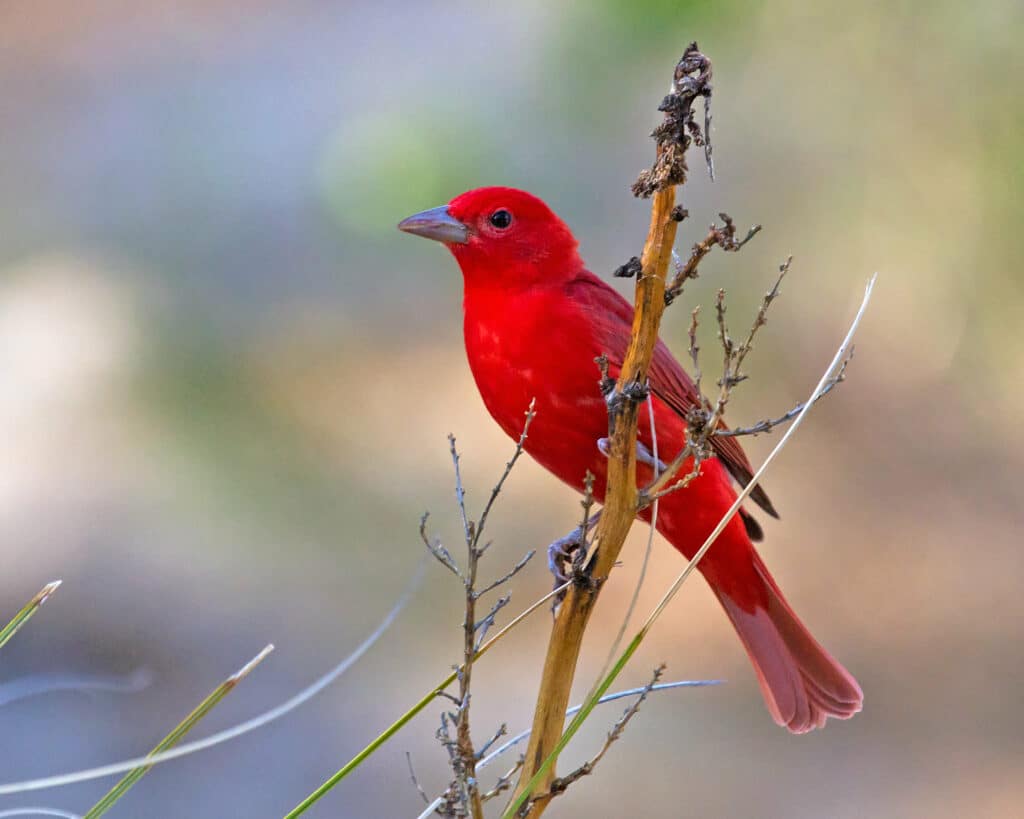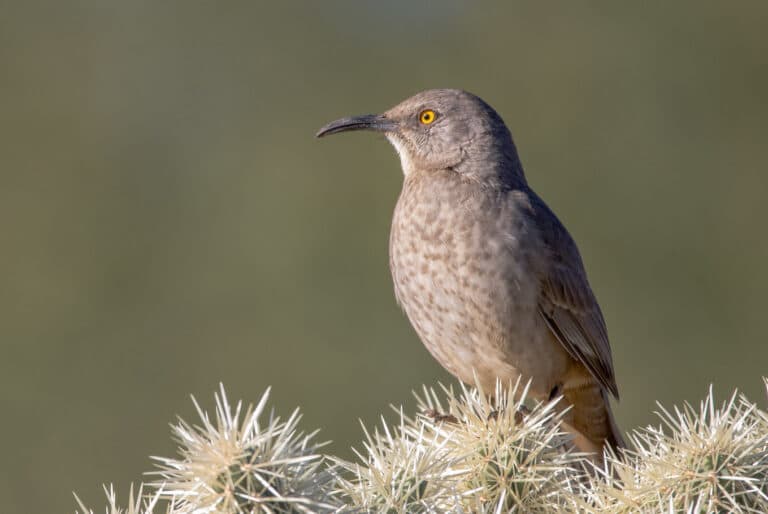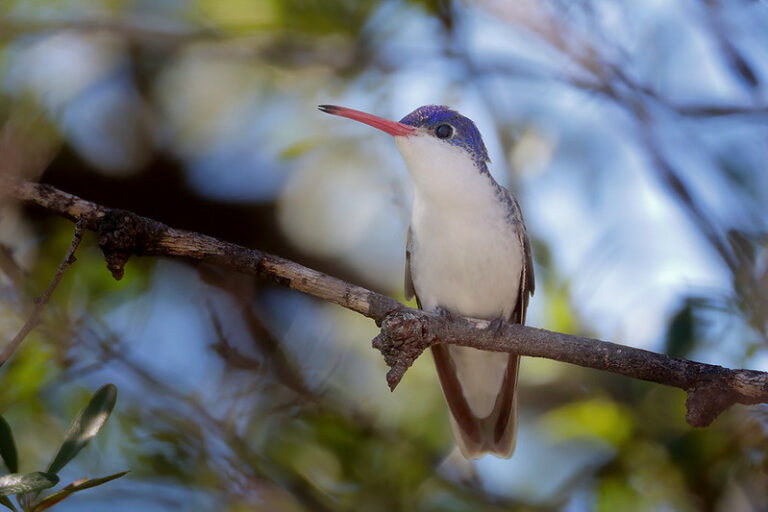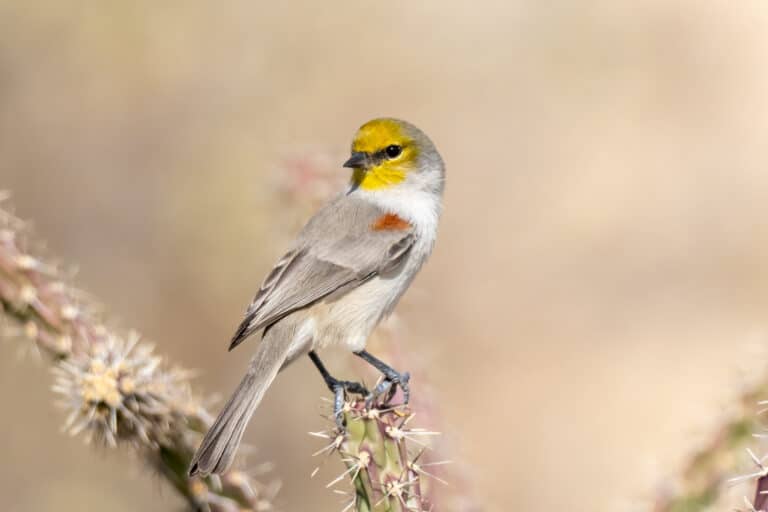On a recent bicycle ride along the cottonwood/willow tree-lined Santa Cruz River in northwest Tucson I came across my first-of-season Summer Tanager. It’s always a fun exercise after hearing its loud and forceful pit-ti-tuck calls to try to find either the bright red male or a yellow female hiding up in the verdant green leaves of new spring growth. It was a bit easier this time as I was on a raised path and could peer into the tops of the tall trees. Summer Tanagers are long-distance neotropical migrants that occupy Southeast Arizona all summer after wintering in southern Mexico and northwest South America into Bolivia. Listen for their call and robin-like song along riparian areas like the Santa Cruz and San Pedro Rivers, and Tanque Verde Wash, up into the oak woodlands of our Sky Islands where they share habitat with the similar looking Hepatic Tanager.
The male Summer Tanager is the only completely red bird in North America, and although it eats fruit like other tanagers, the species is known for specializing in feeding on bees and wasps—it’s also called “bee bird.” It expertly removes stingers and can also harass hives and wasp nests until they are abandoned and then rips them open to feed on the grubs!
Summer Tanager is broken into three subspecies, and interestingly, the eastern subspecies builds very simple, flimsy nests, while our western birds build well-constructed, sturdy nests. And just so you know, the “tanagers” in North America are part of the cardinal family and are no longer considered “true tanagers” like the species that breed in Central and South America. The “Summer Cardinal?” A certain other red bird might not take too kindly to that name!
Image by Lois Manowitz




